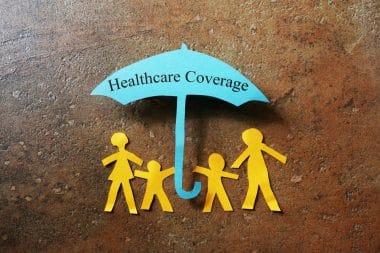Medicare refers to the federal social and health insurance coverage for people 65 years and older, as well as disabled people, which was introduced in 1965. In 2017, statistics show that about 17.2 percent of Americans benefited from Medicare in the United States at 707 billion US dollars.
The beneficiaries of Medicare have the opportunity to change coverage every year, which is called the Medicare Annual Enrollment Period or AEP. Below are some of the good-to-know things about Medicare’s AEP:
Medicare AEP Has Different Names
The Medicare Annual Enrollment Period is between October 15 and December 7. This is the time to choose the perfect Medicare plan to improve your health and well-being, which can provide emotional and financial peace of mind.
The Medicare AEP has different names, such as the following:
- Medicare Fall Open Enrollment
- Medicare Open Enrollment Period (OEP)
- Annual Election Period (AEP)
Medicare AEP Preparation
The options you can choose from when it comes to Medicare coverage include Original Medicare (Parts A and B), Medicare Advantage (Part C), and prescription drug coverage (Part D). For you to choose the best plan to cover your health needs, you should be abreast with Medicare open enrollment tips by going to resource sites and doing some research.
Difference Between Medicare AEP and GEP
The Medicare AEP is different from the Medicare General Enrollment Period or GEP, wherein the latter takes place between January 1 and March 31. With Medicare AEP, you can modify your current Medicare coverage.
Delay in enrollment in Medicare AEP gives you a chance to enroll in GEP and late-enrollment penalties apply. With GEP, you can enroll in either Part A or B. It means that you cannot switch from Medicare Advantage (MA) to Original Medicare or vice versa. Also, you cannot change the Medicare Part D plan when on the GEP.
Medicare AEP Plans
As previously mentioned, Medicare has different coverage. Part A or Hospital Coverage: Applying for Medicare will automatically enroll you in Part A. It covers not only hospital stays, but also hospice care, nursing care, and rehabilitation required by those who were hospitalized for fractures, a stroke, or other injuries.
Part A is not totally free, but a portion is already paid through Medicare tax deductions. The inpatient hospital deductible changes every year, like from $1,340 in 2018 to $1,364 in 2019. For the first 60 days of hospitalization, Medicare pays for all hospital services with some exceptions, like paying for a private room.
Part B would cover ambulance transportation, lab tests, medical equipment, diagnostic screenings, outpatient services, and doctors. While you would pay a higher premium for Part B, it’s best to sign up for this Medicare plan if you don’t have additional insurance or you’re not covered in the health plan of your spouse.
For 2019, Medicare Part B enrollees need to pay a standard monthly premium of $135.50, which increased $1.50 from 2018 ($134). If your income is over $85,000, your premium is higher. For people with Social Security, the monthly premium is deducted from the monthly benefit.
Medicare Advantage or Part C is likened to private insurance coverage bundles, like combining. On the other hand, Part D is a more comprehensive plan. Medicare Advantage plans cover dental care, vision care, and mobility devices, like shower grips and wheelchair ramps, as well as transportation and meal delivery.
Coverage Changes
During the AEP (from October 15 through December 7), you can make changes in your Medicare coverage plans. It would take effect on January 1. If you realized that signing up for a Medicare Advantage Plan during the fall window is not suitable or you, it’s possible to change your coverage once from January 1 to March 31 next year, which changes the coverage rules.
During the AEP, you can:
- Switch from Original Medicare (hospital coverage or Part A and outpatient coverage or Part B) to an Advantage Plan or Part C.
- Switch from an Advantage Plan to Original Medicare
- Transition from one Medicare Advantage Plan to another
- Transition from Part D or one prescription drug plan to another
- Purchase a Part D plan if you’re not able to get one when you were first eligible
Conclusion
It’s important to evaluate your current insurance every year to find out if it’s still your best option because everyone has to change health needs. Remember that medication coverage changes and so does the network of doctors. New plans could be better than your existing plan, so it would be best to review your options. By knowing everything about Medicare AEP, you’ll have peace of mind that you’ll fully benefit from the plan you currently have.








Reply